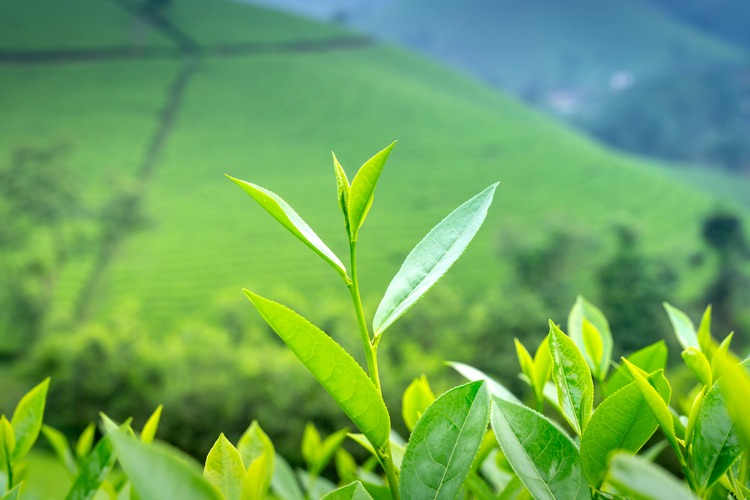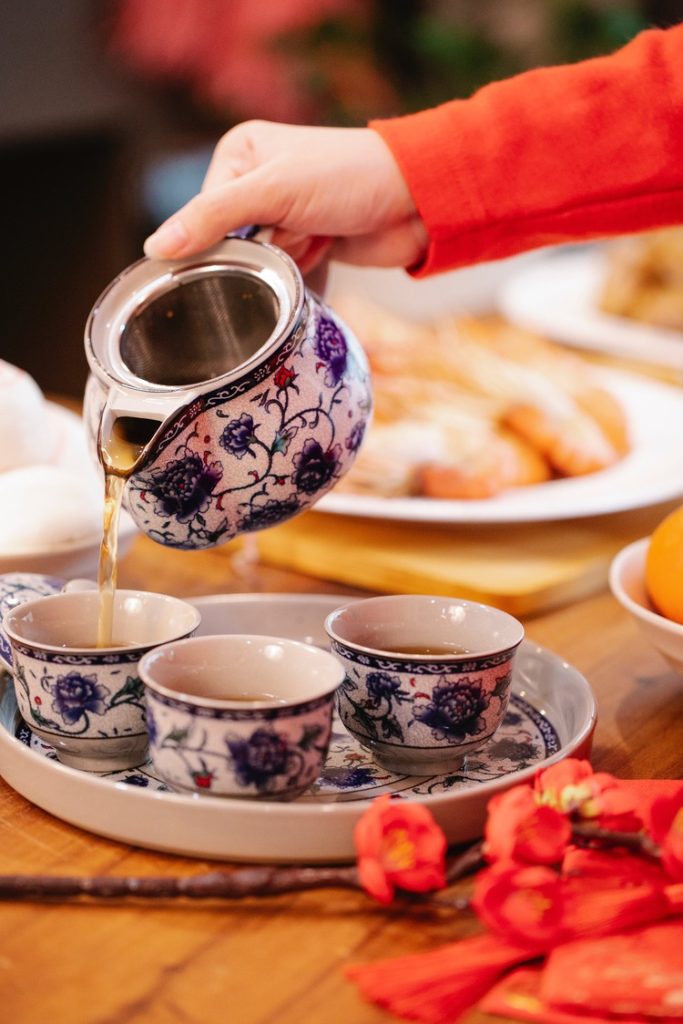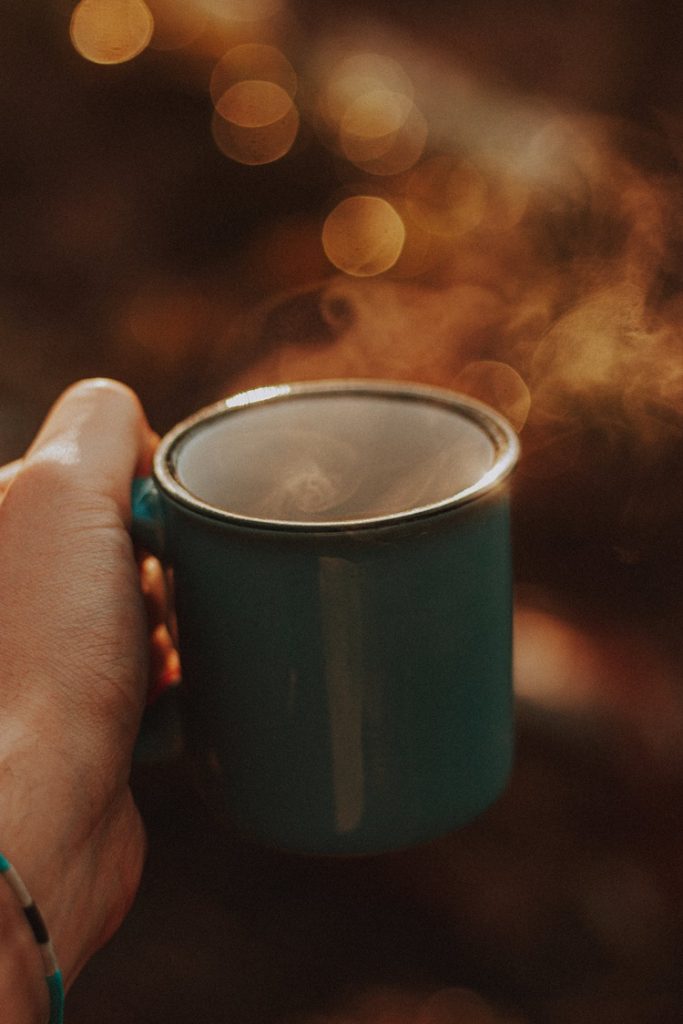Xinyang Maojian tea is a famous Chinese tea that has been delighting tea connoisseurs for centuries. Known for its exquisite flavor and lovely aroma, this green tea variety hails from the lush Xinyang region in the Henan province of China.
You’ll find that Xinyang Maojian tea leaves have a slender shape with fine white hairs on the surface, reflecting the tea’s delicate nature. The brewing process unveils a gentle, pale-green hue, and the enchanting fragrance entices your senses. Upon taking your first sip, you’ll experience a taste that is both mellow and refreshing, with notes of floral and vegetal, leaving your taste buds pleased.
Keep reading to learn more about a tea representing a heritage spanning thousands of years. Taking time to learn about this exceptional variety is well worth the time.
Please note: This article contains affiliate links, meaning I may earn a commission if you make a purchase by clicking a link. Of course, this comes at no extra cost to you and helps me to keep offering solid information to readers.

Origins
Xinyang Maojian tea originates from Xinyang, a city in Henan Province, China. As you may know, China has a rich history of tea cultivation, and the Xinyang region is no exception. The history of Maojian tea dates back thousands of years to the Zhou Dynasty.
During the Tang Dynasty, tea production in Xinyang reached an all-time high thanks to the ideal climate and fertile soil. These favorable conditions resulted in the distinct flavor and aroma you can now enjoy in your cup of tea.
Fun fact: Maojian refers to the shape of the tea leaves, which are tightly curled, resembling the fine hairs found on many young plant shoots. This detail adds to the uniqueness of Xinyang Maojian tea.
Cultivation Process
Geographical Factors
Xinyang Maojian Tea, or Mao Jian, is cultivated in the high mountains surrounding Xinyang City in the Dabie Mountain Range. These mountains provide the perfect environment for tea plants, as their high altitude, abundant forests, and yearly rainfall create a subtropical to warm-temperate climate. The geographical conditions lead to a thriving ecosystem where tea trees can grow strong, healthy, and flavorful.
Seasonality
The growing season for Maojian Tea is divided into three main periods: spring, summer, and autumn. Each period has its characteristics and affects the quality of the tea in distinct ways.
- Spring Tea: This is the most prized and sought-after season for Maojian Tea production. The fresh leaves picked during this time are young and tender, imparting a delicate and fragrant flavor to the tea.
- Summer Tea: The tea growth during the summertime is faster, leading to slightly coarser leaves and a stronger, more robust flavor.
- Autumn Tea: Although the autumn harvest yields a lower quantity of tea leaves, their quality is comparable to that of spring tea, with a delicate and mellow taste.
Harvesting
Picking tea leaves requires a keen eye and skillful hands. The tea is harvested primarily by hand, ensuring only the freshest and most tender leaves are selected.
During the harvesting process, the tea pickers choose only the youngest tea leaves (one bud and one leaf or two leaves), which are known to produce the finest quality. This attention to detail guarantees that every cup of tea brewed with these carefully selected leaves will bring a delightful experience.
Production Method
Tea Processing
After gathering the tea leaves, proper withering is ensured by spreading the leaves in a thin layer, allowing them to lose some of their moisture.
Next, the leaves are rolled, giving them their signature twisted shape. Rolling helps to release the essential oils and break down cell walls, improving the flavor of the brewed tea. Following rolling, the leaves are quickly pan-fried. This step, referred to as “killing the green,” stops the oxidation process and helps preserve the green color and fresh flavor of the tea.
Brewing Xinyang Maojian Tea
To enjoy a perfect cup of Xinyang Maojian tea, follow these brewing guidelines:
- Tea-to-water ratio: Use about 3 grams of tea leaves for every 8 ounces (about 240 milliliters) of water.
- Water temperature: The ideal water temperature should be between 176°F to 185°F (80°C to 85°C). Using water that is too hot can result in a bitter and astringent taste.
- Steeping time: Steep the tea leaves for 1 to 3 minutes. You can adjust the steeping time according to your taste preferences, but remember that oversteeping may lead to bitterness.
- Multiple infusions: Xinyang Maojian tea is suitable for multiple infusions. Each subsequent infusion will reveal more nuances in the tea’s flavor profile.

Classification and Grading
When it comes to Maojian tea, there are different classifications and grades that you should be aware of. By understanding these distinctions, you can better appreciate the high standards of this tea.
One way to classify Maojian tea is by the quality level. High-quality tea leaves are typically picked during the early spring when new shoots sprout. These delicate leaves are known for their fine shape, distinct aroma, and rich flavor. There are also lower-quality leaves, which have a more common taste and are usually harvested later in the season.
In addition to quality level, the tea has a specific grading system. These grades can give you a better idea of a tea’s characteristics and help you select the right one for your taste buds. Some common grades include:
- Gold Medal: This is the highest grade of Xinyang Maojian tea, made from the finest leaves with exceptional taste and aroma. Gold Medal teas are rare and highly sought after by tea connoisseurs.
- First Grade: This tea has a slightly lower grade than Gold Medal but still offers an excellent taste and aroma. The leaves are slightly larger, making the tea less expensive than Gold Medal.
- Second Grade: Although less exquisite than the previous two grades, Second Grade Maojian tea offers a good flavor and aroma at a more affordable price point.
Characteristics
There are some common characteristics associated with Xinyang Maojian tea:
- Aroma: The tea typically has a fresh and vegetal aroma with hints of chestnut or nuttiness. The dry leaves often emit a slightly sweet, grassy fragrance.
- Flavor: The flavor of Xinyang Maojian tea is known for being brisk and refreshing. It has a delicate, sweet, and vegetal taste with a subtle nutty or chestnut undertone. The tea is often described as having a clean and crisp profile.
- Sweetness: This tea can have a natural sweetness, complementing the vegetal and slightly astringent qualities. The sweetness is often compared to sugarcane or honey.
- Vegetal Notes: Xinyang Maojian tea is reminiscent of fresh green vegetables, with a slight grassy or spinach-like quality. These vegetal notes are balanced by sweetness and nuttiness.
- Mouthfeel: The mouthfeel is typically smooth and slightly astringent, with a clean and long-lasting finish.
- Appearance: The dry leaves are slender and twisted, and the infusion often has a pale green to light yellow color.
It’s important to note that the specific flavor profile of Xinyang Maojian tea can vary from one producer to another and from one harvest to the next. The growing conditions, processing methods, and the tea master’s expertise all play a role in shaping the tea’s final flavor.
For the most accurate description of a particular tea, it’s best to consult the product’s packaging or the vendor’s recommendations, as they may provide more detailed information on the specific characteristics of the tea they offer.

Health Benefits
You’ll be delighted to know that Xinyang Maojian tea, a type of green tea, is packed with numerous health benefits. Let’s explore some key advantages you can enjoy while sipping this delicious beverage.
First, the high content of polyphenols in the tea is a notable benefit. Polyphenols are natural antioxidants that help protect your cells from damage caused by free radicals. They also reduce inflammation and may lower your risk of developing certain diseases.
Another advantage is the presence of caffeine in this tea. When consumed in moderation, caffeine can boost your alertness and concentration. It may also enhance your metabolism and support weight management with a healthy diet and exercise.
The tea is also rich in catechins, an antioxidant that makes green tea a standout choice for health enthusiasts. Catechins are known for their ability to increase the body’s natural fat-burning processes and improve cardiovascular health.
PCA, or protocatechuic acid, is another antioxidant included in this tea. It may help with weight management and reduce the risk of chronic diseases. Furthermore, it’s believed to have a positive impact on managing diabetes and regulating blood sugar levels.
When it comes to the metabolomics of the tea, understanding the complex chemical reactions involved in breaking down and processing its components is essential. Metabolomics helps us better assess the tea’s quality and nutritional value.
Similar Teas
As a tea enthusiast, it is interesting to explore teas that share certain qualities with the tea featured in this article. Among the many varieties of Chinese tea, a few of them stand out for their unique flavors and characteristics.
Yu Maofeng: A popular green tea from Anhui province, Yu Maofeng shares a smooth and fresh taste, similar to Xinyang Maojian. The bright green leaves of this tea are known for their delicate aroma, and the infusion offers a slightly sweet finish.
Another region worth exploring for tea similarities is Zhejiang. This province is home to several remarkable teas that exhibit complex flavors and intricate processing techniques, like the ones used in Xinyang Maojian tea production.
- Longjing Tea: Also known as Dragon Well tea, Longjing is a famous green tea from Zhejiang province. It is highly appreciated for its quality, characterized by its tender leaves, soft aroma, and refreshing taste. Longjing tea exhibits a mild, pleasant taste, making it a perfect option for someone who enjoys the subtle flavors of Xinyang Maojian.
- Anji Bai Cha: Anji Bai Cha, or Anji White Tea, isn’t a white tea despite its name; it is a unique green tea from Zhejiang province. It has a light, slightly sweet taste and shares similar mild attributes with Xinyang Maojian. If you are a fan of delicate teas, you will appreciate Anji Bai Cha.
While exploring similar teas, remember that each tea has its particular story, and the genuine appreciation of these masterpieces lies in immersing yourself in their flavors and essence. We encourage you to dive deep into the world of Chinese tea and discover the exquisite nature of each variety.
Buying Recommendations
If you are looking to buy Maojian tea online, please take into consideration the following products:

XIXICHA Maojian Tea

Buy on Amazon now!
Frequently Asked Questions
What is the best way to brew Xinyang Maojian tea?
To brew this tea, start with fresh, filtered water and heat it to around 80°C (176°F). Measure out about 3 grams of tea leaves per 150ml of water. Place the tea leaves into a teapot or gaiwan, and pour the hot water over the leaves. Steep the tea for 1-2 minutes, then pour it into your cup or pitcher. You can adjust the steeping time and water temperature according to your taste.
How does Xinyang Maojian tea compare with Longjing tea?
Xinyang Maojian and Longjing tea are both highly regarded green teas from China, each with unique characteristics. Xinyang Maojian tea comes from the Henan province, with small, tightly rolled leaves that produce a bright green infusion. Its flavor is fresh and delicate, often described as having a sweet, floral note.
Longjing tea, also known as Dragon Well tea, comes from the Zhejiang province. This tea has flat, sword-like leaves, which yield a pale green infusion with a subtle chestnut aroma. Longjing tea’s taste is mellow and sweet with a hint of umami. Both teas are excellent choices for green tea enthusiasts but may appeal to different flavor preferences.
What are the health benefits of Xinyang Maojian tea?
This tea contains various bioactive compounds such as antioxidants, catechins, and vitamins that may benefit health. These benefits include improved cognitive function, weight management, and heart health. Additionally, green tea consumption has been linked to a reduced risk of certain types of cancer. As with any health claims, it’s important to remember that tea is not a miracle cure and should be consumed as part of a balanced diet and lifestyle.
Where can I buy high-quality Xinyang Maojian tea?
To find high-quality Xinyang Maojian tea, look for reputable tea vendors that specialize in Chinese teas. Reliable vendors will have a good understanding of the tea’s origin, processing, and quality features. You can purchase this tea online or in specialty tea shops. Don’t be afraid to ask questions, read reviews, and sample different brands to find the best tea.
Does Xinyang Maojian tea contain caffeine?
Yes, this tea contains caffeine, as it’s made from the Camellia sinensis plant, which naturally contains this stimulant. However, green teas like Xinyang Maojian generally have lower caffeine levels than black or oolong teas. This makes it a suitable choice for those sensitive to caffeine or those looking for a lighter pick-me-up.
How should I store Xinyang Maojian tea to keep it fresh?
To keep your Xinyang Maojian tea fresh, store it in an airtight container, away from direct sunlight, moisture, and strong odors. A ceramic, metal, or opaque glass container is preferred. Avoid using plastic or paper bags, as they may not provide enough protection from air and moisture. Keep your tea in a cool, dry, dark place to maintain its quality and flavor.

I hope you enjoyed the article.
Have you tried this tea?
More About Green Tea
What Does Green Tea Taste Like?
The Process of Making Green Tea